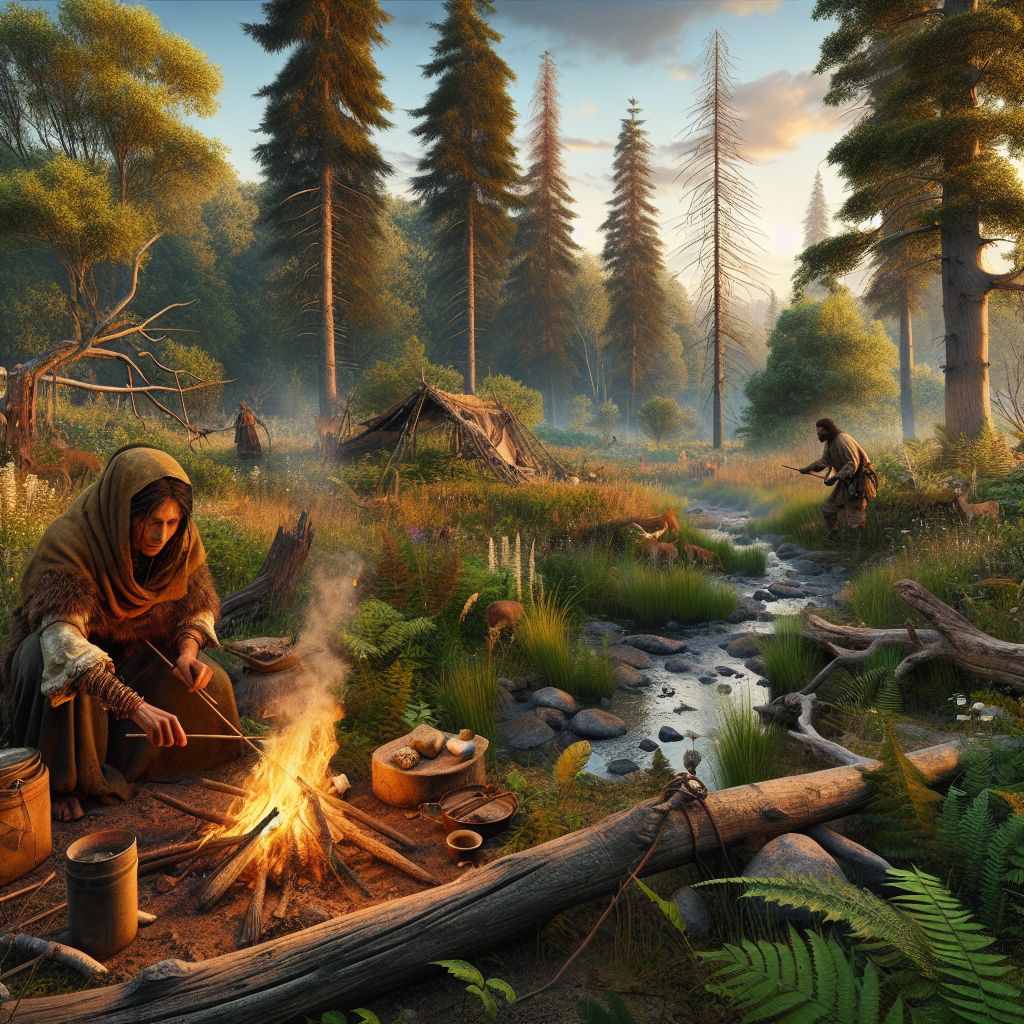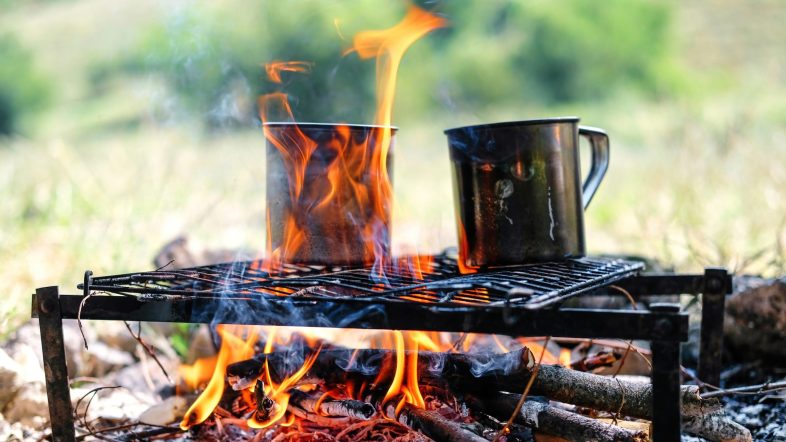
When you set out into the wild you need our Ultimate Wilderness Survival Tips, the right knowledge can turn an ordeal into an adventure. Whether you’re a seasoned trekker or a novice camper, understanding the essentials of wilderness survival is key to enjoying the great outdoors safely. Let’s get you equipped with the ultimate survival tips, tools, and guide to confidently face whatever nature throws your way.
Key Takeaways
- Understand the essentials for wilderness preparedness including gear, mindset, and skills.
- Learn the steps to building a sturdy and reliable shelter in various environments.
- Discover how to find and purify water, a critical component of survival.
- Master fire-building techniques to stay warm, cook food, and signal for help.
- Identify edible plants and learn the basics of hunting and trapping for sustenance.
Essentials of Wilderness Preparedness
Before venturing into the wild, it’s crucial to prepare both mentally and physically. Knowing what to pack is only part of the equation; understanding the principles of survival is just as important. Most importantly, always let someone know your plans and expected return, so help can find you if needed.
Firstly, gear up with the essentials: a reliable knife, a means to purify water, a shelter or materials to build one, a fire starter, a first aid kit, and a compass or GPS device. These tools are your lifeline in the wilderness, so choose quality over quantity.
Secondly, your mindset can be your greatest asset or your biggest obstacle. Stay calm, think clearly, and remember that every problem has a solution. Therefore, practice essential skills like shelter building and fire starting before you actually need them.
Building The Ultimate Survival Kit
Your survival kit should be tailored to your environment and the length of your trip. It should include:
- A multi-tool or knife for cutting and repairs.
- Water purification tablets or a portable filter.
- Emergency shelter like a lightweight tent or a tarp.
- Fire-starting gear such as waterproof matches or a ferro rod.
- A comprehensive first aid kit.
- Navigation tools including a map and compass.
Remember, this kit is your emergency backup, not your primary gear. Keep it compact and lightweight.
Ultimate Wilderness Survival Tips is the Foundation of Shelter Building

“Building for survival © James Allan cc …” from www.geograph.org.uk and used with no modifications.
Finding yourself in the wilderness without shelter can be daunting, but with the right knowledge, you can create a refuge from the elements. Shelter building is a fundamental survival skill because it protects you from wind, rain, and extreme temperatures.
Choosing the Right Location
When selecting a site for your shelter, look for a spot that’s flat and dry. Avoid valleys and paths where water may flow and steer clear of dead trees or unstable boulders that could fall. Ideally, your shelter should be close to a water source but elevated to prevent flooding.
Using Natural Materials Effectively
Nature provides an abundance of materials to construct a shelter. Fallen branches, leaves, and even snow can be used to insulate and protect. For example, a simple lean-to can be made by leaning branches against a fallen log, covering the gaps with foliage to block the wind.
Securing Potable water
Water is life, especially in the wilderness. Finding a reliable water source is paramount because dehydration can quickly become a serious threat. Besides that, you must ensure the water is safe to drink. Streams, rivers, and lakes can be sources, but remember, appearances can be deceiving; even clear water can harbor pathogens.
Understanding water Sources
First, locate water by looking for green vegetation, animal tracks, or insects, which often indicate water nearby. Dew and rainwater are also excellent sources. However, avoid stagnant water as it’s more likely to contain harmful microorganisms.
Purification Methods on the Go
Once you’ve found water, it’s time to purify it. Boiling is the most reliable method—just one minute of rolling boil will kill most pathogens. If you can’t boil it, purification tablets or a portable filter can be lifesavers. Remember, it’s better to be safe than sorry when it comes to water.
Fire Creation and Maintenance
Fire is a multi-purpose tool in the wilderness; it keeps you warm, cooks your food, purifies water, and signals for help. Creating and maintaining a fire is a skill that requires practice and patience.
Fire-Building Techniques
To build a fire, you need three things: tinder (like dry leaves), kindling (small sticks), and fuel (larger logs). First, create a small pile of tinder, then add kindling in a teepee shape around it. Light the tinder, and as the fire grows, gradually add larger pieces of fuel. Ensure your fire is well-ventilated and always have water or dirt nearby to extinguish it if needed.
Fire Safety and Etiquette
Never leave a fire unattended, and be aware of your environment. In dry conditions, fires can spread quickly. To extinguish a fire, douse it with water, stir the ashes, and apply more water until it’s cool to the touch.
Foraging for food: Safe Practices

“Science of Mushroom Identification …” from www.foraged.com and used with no modifications.
Food is your energy source in the wilderness, and while you can survive weeks without it, you’ll need strength for the tasks at hand. Foraging and hunting are your means to a meal.
Identifying Edible Plants
Many plants are nutritious and safe to eat, but it’s crucial to know which ones. Invest in a good field guide to learn about local flora. Remember, if in doubt, leave it out—mistaking a toxic plant for food can be a fatal error.
Hunting and Trapping Basics
If you’re in an area where hunting is permitted, small game like rabbits and squirrels can be a valuable protein source. Simple snares and traps can be effective, but you must know local regulations and humane practices. Hunting requires skill and patience, so for many, foraging remains the more accessible option.
Navigation Skills in the Wilderness
Getting lost can happen to even the most experienced outdoorsman. Navigation skills are essential to find your way back or reach your destination.
Map and Compass Fundamentals
Always carry a map and compass—these tools don’t rely on batteries and can be lifesavers. Learn how to orient your map and use your compass to find directions. The sun rises in the east and sets in the west, a simple yet effective way to get your bearings.

Natural Navigation Techniques
Besides that, nature provides clues for direction. The moss on trees, for instance, often grows more heavily on the north side in the Northern Hemisphere. And at night, the North Star (Polaris) in the constellation Ursa Minor is a reliable indicator of north.
First Aid in Remote Locations
Accidents happen, and in the wilderness, being your own first responder is often necessary. A well-stocked first aid kit and the knowledge to use it are critical.
Creating an Emergency Medical Kit
Your kit should include bandages, antiseptic wipes, adhesive tape, blister treatments, pain relievers, allergy medications, and any personal medications. Tailor your kit to your environment—snake bite kits for desert areas, cold packs for hot climates, etc.
Handling Common Injuries
Learn to treat common injuries like cuts, sprains, and burns. Clean wounds thoroughly to prevent infection, and know how to create splints or slings from materials on hand. Sometimes, the best medicine is prevention—so always be cautious.
Signaling for Help and Rescue
If you’re in trouble, being seen or heard can make all the difference. Effective signaling can lead rescuers to your location.
Visual and Audible Signals
Create visual signals like the universal distress signal—three of anything: three fires, three piles of rocks, or three blasts on a whistle. Audible signals, such as blowing a whistle or banging metal objects together, can carry over long distances.
The Psychology of Staying Positive
Maintaining a positive mental attitude is crucial. Rescue may take time, but staying hopeful and proactive improves your chances of being found. Keep your spirits up by setting small, achievable goals and staying busy.
Adapting to Extreme Weather Conditions
Extreme weather demands respect and preparation. Whether it’s searing heat or bone-chilling cold, knowing how to adapt is key to survival.
Surviving the Cold
In cold climates, staying dry and insulated is essential. Dress in layers and avoid sweating. Build a fire for warmth and melt snow for drinking water if necessary. Remember, hypothermia can set in quickly, so keep your core temperature up.
Overcoming Heat and Dry Climates
In hot environments, find shade during the peak heat of the day, wear light-colored clothing to reflect the sun, and conserve sweat, not water—drink regularly to stay hydrated. Heatstroke is a real danger, so cool down at any sign of overheating.
Wilderness Survival Tips for Families
Surviving in the wild with your family, especially children, requires extra planning and consideration. Everyone’s safety and morale are paramount. For comprehensive guidance, check out this Wilderness Survival Tips, Tools & Guides.
Special Considerations for Children
Teach children basic survival skills in a fun and engaging way. Make sure they know to stay put if they get lost and how to use a whistle. Pack extra supplies like comfort foods, games, and familiar items to keep them calm and occupied.
Wilderness Survival Tips for Families
Heading into the wilderness as a family can be an enriching experience, fostering teamwork and resilience. Yet, it comes with its own set of challenges and responsibilities. Ensuring each family member knows their role and understands basic survival techniques can make all the difference in creating a memorable adventure rather than a distressing situation.
Special Considerations for Children
- Teach children age-appropriate survival skills, like staying where they are if they get separated.
- Equip them with a whistle and teach them the emergency signal: three sharp blasts.
- Involve children in planning and decision-making to keep them engaged and calm.
- Carry a child’s ID and medical information on your person at all times.
Children can be surprisingly resilient, but they also need comfort and reassurance. Pack their favorite snacks, a comfort toy, and involve them in simple camp tasks to keep their minds occupied. Explain what’s happening in a way they can understand, and turn survival into a learning game to lessen their fears.
Most importantly, practice ‘what-if’ scenarios before your trip. It not only prepares them but also helps you identify any gaps in their understanding. Besides that, it’s a great way to bond as a family and instill confidence in your little ones.
Remember, their gear should be lightweight and tailored to their size. A heavy pack will tire them out quickly and could lead to a dangerous situation.
Group Survival Dynamics
In a group survival scenario, leadership and clear communication are vital. Assign roles based on each person’s strengths to ensure all survival needs are met efficiently. A well-functioning team can significantly increase the chances of a successful wilderness experience.

“TECHNOLOGY CONCEPT THEME Royalty Free …” from vectorportal.com and used with no modifications.
Technology and Survival: Using Modern Gadgets
While traditional skills are the backbone of wilderness survival, modern technology can offer a significant advantage. Devices such as satellite phones, GPS trackers, and personal locator beacons can be invaluable in an emergency.
High-Tech Survival Gear
Investing in a solar-powered charger can keep devices operational without access to electricity. water purification systems have advanced to compact, lightweight devices that can quickly provide clean drinking water. A durable, waterproof smartphone or tablet with pre-downloaded survival guides and maps can be a lifesaver.
It’s essential to know the limitations of your gear. Batteries drain, signals can be lost, and equipment can fail, so always have a backup plan. Traditional skills should not be forgotten; they complement high-tech gear and ensure you’re prepared for any eventuality.
Pros and Cons of Relying on Technology
While technology can make certain aspects of survival easier, over-reliance on gadgets can leave you vulnerable if they fail. Always carry a map and compass, and know how to use them. Understand the basics of starting a fire without a lighter and how to purify water using natural methods.
On the other hand, technology can provide quick access to weather reports, allowing you to prepare for incoming storms or extreme temperatures. It can also help you signal for help much more effectively than traditional methods if you find yourself in distress.
Long-Term Wilderness Living
For those who find themselves in prolonged wilderness scenarios, survival shifts from short-term strategies to sustainable living practices.
Sustainable Practices
Long-term survival in the wilderness requires a shift in mindset. It’s about living with the land, not just off it. This means learning to forage sustainably, managing resources like firewood, and even cultivating a small garden if your situation allows. Harvesting rainwater and understanding the patterns of local wildlife can lead to a more stable and sustainable existence.
From Surviving to Thriving
With time, you can move beyond just surviving and start thriving in the wilderness. This might include building more permanent structures, improving your foraging and hunting skills, and even creating tools and crafts to make life more comfortable. The key is to maintain a balance with nature and respect the environment that’s providing for you.
What’s Next
With these tips and guidelines, you’re well on your way to becoming proficient in wilderness survival. But the learning never stops. Continue to hone your skills, practice regularly, and stay informed about the latest survival strategies and tools.

What are the top three priorities in a survival situation?
In any survival situation, remember the rule of threes: you can survive three minutes without air, three hours without shelter in extreme conditions, three days without water, and three weeks without food. Therefore, your top priorities should be securing shelter, finding water, and then food.
How can I signal for help if I don’t have any gadgets with me?
If you find yourself without gadgets, use the resources around you to signal for help. Create a signal fire by adding green vegetation to your fire to produce smoke, use a mirror or any reflective surface to signal aircraft, or use stones to spell out an SOS on open ground.
What should I do if I encounter wildlife?
If you encounter wildlife, stay calm and do not approach or attempt to feed the animal. Back away slowly and give it space. Make yourself appear larger and make noise to discourage predators. Always be aware of your surroundings and take precautions to avoid attracting wildlife to your campsite.
Are there any universal edibles I can find in the wild?
While there are no truly universal edibles, some widely found safe options include dandelions, cattails, and certain berries like blackberries and raspberries. Always be 100% certain of a plant’s identification before consuming it, as many edible plants have toxic look-alikes.
How do I maintain my orientation without a compass?
Without a compass, you can use the position of the sun or stars to navigate. The sun rises in the east and sets in the west, while at night, the North Star (Polaris) indicates north in the Northern Hemisphere. Observing the growth patterns of moss and the shape of trees can also provide directional clues.
Remember, your best survival tool is your knowledge. With the right preparation and a positive mindset, you’ll be able to face the challenges of the wilderness and come out stronger. So pack your gear, brush up on your skills, and head out into the great outdoors with confidence.


